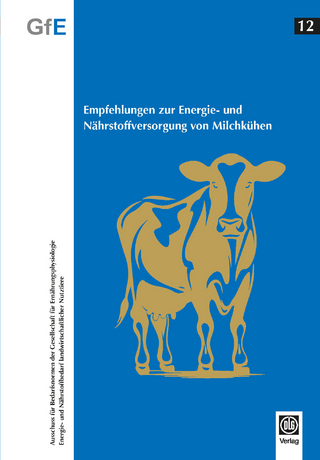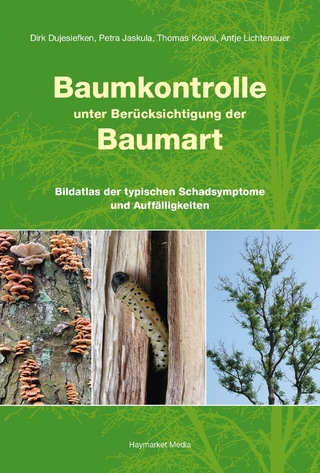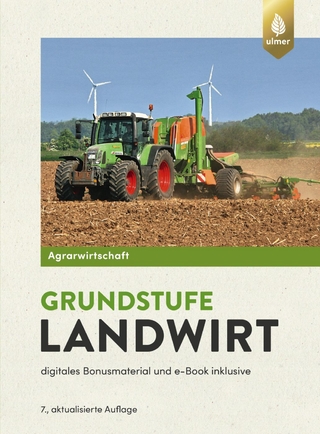
Smart Big Data in Digital Agriculture Applications
Springer International Publishing (Verlag)
978-3-031-52644-2 (ISBN)
This book details the foundations of the plant physiology-informed machine learning (PPIML) and the principle of tail matching (POTM) framework. It is the 9th title of the "Agriculture Automation and Control" book series published by Springer.
Haoyu Niu is a research engineer in the Institute of Data Science at Texas A&M University, College Station (TAMIDS). He works at the intersection of data science and cyberinfrastructure for smart agriculture. He joins a team of researchers from TAMIDS, Texas A&M's Department of Electrical & Computer Engineering, AgriLife Research, AgriLife Extension, and the School of Performance, Visualization and Fine Arts on a project to develop data-driven infrastructure that enables efficient irrigation using AI-derived crop-growth model based in UAV imaging and environmental data. His research interests include machine learning, computer vision, and robotics. More specifically, he is interested in applying big data, deep learning, and remote sensing technology for data analysis. He received his Ph.D. from Electrical Engineering and Computer Science department at UC, Merced.
YangQuan Chen is a full professor at the School of Engineering, University of California, Merced. He was on the faculty of Electrical and Computer Engineering Dept. of Utah State University, Logan, Utah from 2000 to 2012 where he was a tenured associate professor and the Director for the Center for Self-Organizing and Intelligent Systems (CSOIS) from 2004-2012. Dr. Chen published many books, papers and patents. He served as the General Co-Chair for ICUAS 2014 and 2017, 2019 (International Conference on Unmanned Aircraft Systems), and on the editorial board for journals like IEEE Trans. on Control Systems Technology, ISA Trans., ASME Journal of Dynamics Systems, Measurement and Control, IFAC journals of Control Engineering Practice as well as IFAC Mechatronics, Fractional Calculus and Applied Analysis, and Nonlinear Dynamics. He also serves as the Topical Editor-in-Chief (Field Robotics), International Journal of Advanced Robotics Systems (IJARS) and Intelligent Service Robotics. He serves as an editorial board member of MDPI Applied Sciences, Sensors. His ISI Publon H-index is 67 with more than 19.6k citations, GoogleScholar citation is 43.2k with H-index 91, H10-index 540. Dr. Chen was in the 2018, 2019, 2010 and 2021 Highly Cited Researchers List by Clarivate. He won Research of The Year awards from Utah State University (2012) and UC Merced (2020) respectively. In 2018, for his cumulative work in drones, Dr. Chen won "Senate Distinguished Scholarly Public Service award" that recognizes a faculty member who has energetically and creatively applied his or her professional expertise and scholarship to benefit the local, regional, national or international community.
Part I Why Big Data Is Not Smart Yet?.- 1. Introduction.- 2. Why Do Big Data and Machine Learning Entail the Fractional Dynamics?.- Part II Smart Big Data Acquisition Platforms.- 3. Small Unmanned Aerial Vehicles (UAVs) and Remote Sensing Payloads.- 4. The Edge-AI Sensors and Internet of Living Things (IoLT).- 5. The Unmanned Ground Vehicles (UGVs) for Digital Agriculture.- Part III Advanced Big Data Analytics, Plant Physiology-informed Machine Learning, and Fractional-order Thinking.- 6. Fundamentals of Big Data, Machine Learning, and Computer VisionWorkflow.- 7. A Low-cost Proximate Sensing Method for Early Detection of Nematodes inWalnut Using Machine Learning Algorithms.- 8. Tree-level Evapotranspiration Estimation of Pomegranate Trees Using Lysimeter and UAV Multispectral Imagery.- 9. Individual Tree-level Water Status Inference Using High-resolution UAV Thermal Imagery and Complexity-informed Machine Learning.- 10. Scale-aware Pomegranate Yield Prediction Using UAV Imagery and Machine Learning.- Part IV Towards Smart Big Data in Digital Agriculture.- 11. Intelligent Bugs Mapping and Wiping (iBMW): An Affordable Robot-Driven Robot for Farmers.- 12. A Non-invasive Stem Water Potential Monitoring Method Using Proximate Sensor and Machine Learning Classification Algorithms.- 13. A Low-cost Soil Moisture Monitoring Method by Using Walabot and Machine Learning Algorithms.- 14. Conclusions and Future Research.
| Erscheinungsdatum | 02.03.2024 |
|---|---|
| Reihe/Serie | Agriculture Automation and Control |
| Zusatzinfo | XVIII, 239 p. 1 illus. |
| Verlagsort | Cham |
| Sprache | englisch |
| Maße | 155 x 235 mm |
| Themenwelt | Weitere Fachgebiete ► Land- / Forstwirtschaft / Fischerei |
| Schlagworte | Big Data • machine learning • Precision Agriculture • Remote Sensing • unmanned aerial vehicle • unmanned ground vehicle |
| ISBN-10 | 3-031-52644-9 / 3031526449 |
| ISBN-13 | 978-3-031-52644-2 / 9783031526442 |
| Zustand | Neuware |
| Informationen gemäß Produktsicherheitsverordnung (GPSR) | |
| Haben Sie eine Frage zum Produkt? |
aus dem Bereich


